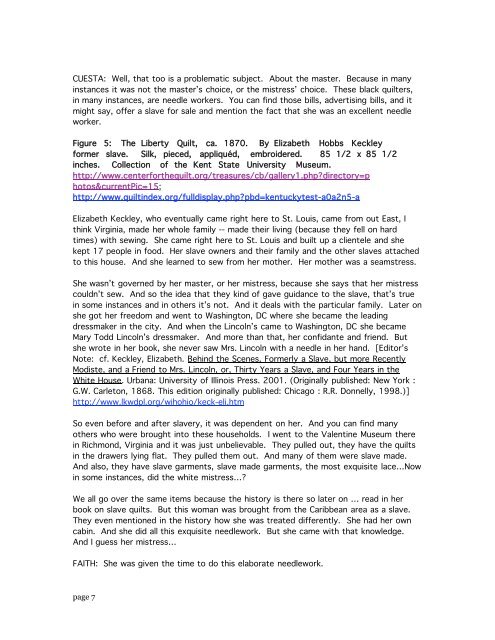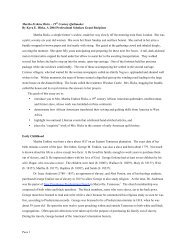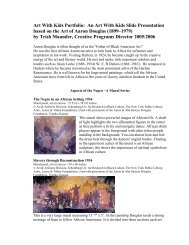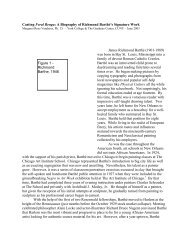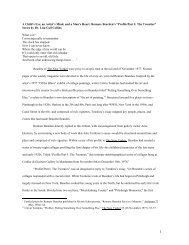Cuesta Benberry - The Anyone Can Fly Foundation, Inc.
Cuesta Benberry - The Anyone Can Fly Foundation, Inc.
Cuesta Benberry - The Anyone Can Fly Foundation, Inc.
You also want an ePaper? Increase the reach of your titles
YUMPU automatically turns print PDFs into web optimized ePapers that Google loves.
CUESTA: Well, that too is a problematic subject. About the master. Because in manyinstances it was not the master’s choice, or the mistress’ choice. <strong>The</strong>se black quilters,in many instances, are needle workers. You can find those bills, advertising bills, and itmight say, offer a slave for sale and mention the fact that she was an excellent needleworker.Figure 5: <strong>The</strong> Liberty Quilt, ca. 1870. By Elizabeth Hobbs Keckleyformer slave. Silk, pieced, appliquéd, embroidered. 85 1/2 x 85 1/2inches. Collection of the Kent State University Museum.http://www.centerforthequilt.org/treasures/cb/gallery1.php?directory=photos¤tPic=15;http://www.quiltindex.org/fulldisplay.php?pbd=kentuckytest-a0a2n5-aElizabeth Keckley, who eventually came right here to St. Louis, came from out East, Ithink Virginia, made her whole family -- made their living (because they fell on hardtimes) with sewing. She came right here to St. Louis and built up a clientele and shekept 17 people in food. Her slave owners and their family and the other slaves attachedto this house. And she learned to sew from her mother. Her mother was a seamstress.She wasn’t governed by her master, or her mistress, because she says that her mistresscouldn’t sew. And so the idea that they kind of gave guidance to the slave, that’s truein some instances and in others it’s not. And it deals with the particular family. Later onshe got her freedom and went to Washington, DC where she became the leadingdressmaker in the city. And when the Lincoln’s came to Washington, DC she becameMary Todd Lincoln’s dressmaker. And more than that, her confidante and friend. Butshe wrote in her book, she never saw Mrs. Lincoln with a needle in her hand. [Editor’sNote: cf. Keckley, Elizabeth. Behind the Scenes, Formerly a Slave, but more RecentlyModiste, and a Friend to Mrs. Lincoln, or, Thirty Years a Slave, and Four Years in theWhite House. Urbana: University of Illinois Press. 2001. (Originally published: New York :G.W. Carleton, 1868. This edition originally published: Chicago : R.R. Donnelly, 1998.)]http://www.lkwdpl.org/wihohio/keck-eli.htmSo even before and after slavery, it was dependent on her. And you can find manyothers who were brought into these households. I went to the Valentine Museum therein Richmond, Virginia and it was just unbelievable. <strong>The</strong>y pulled out, they have the quiltsin the drawers lying flat. <strong>The</strong>y pulled them out. And many of them were slave made.And also, they have slave garments, slave made garments, the most exquisite lace…Nowin some instances, did the white mistress…?We all go over the same items because the history is there so later on … read in herbook on slave quilts. But this woman was brought from the Caribbean area as a slave.<strong>The</strong>y even mentioned in the history how she was treated differently. She had her owncabin. And she did all this exquisite needlework. But she came with that knowledge.And I guess her mistress…FAITH: She was given the time to do this elaborate needlework.page 7


